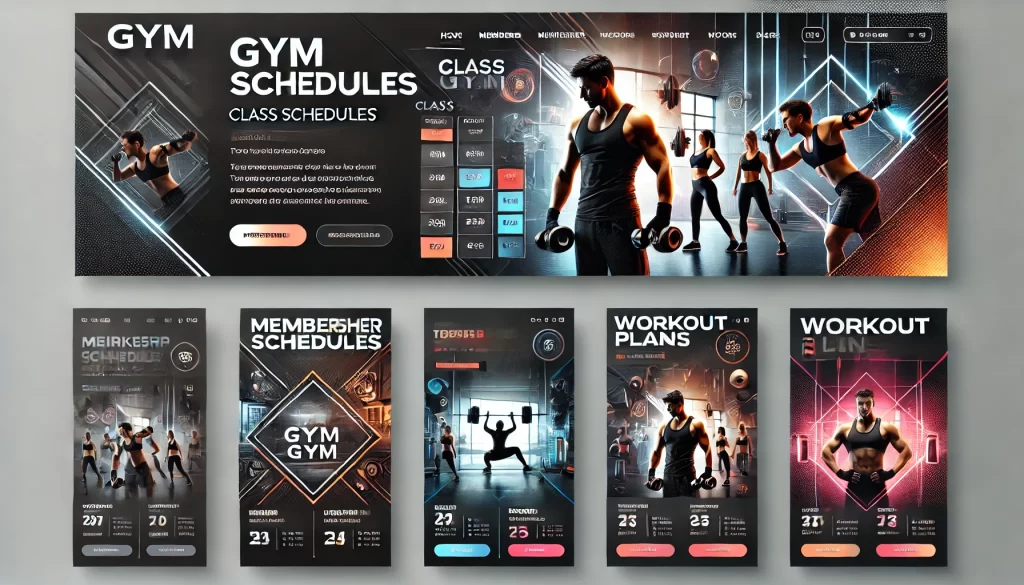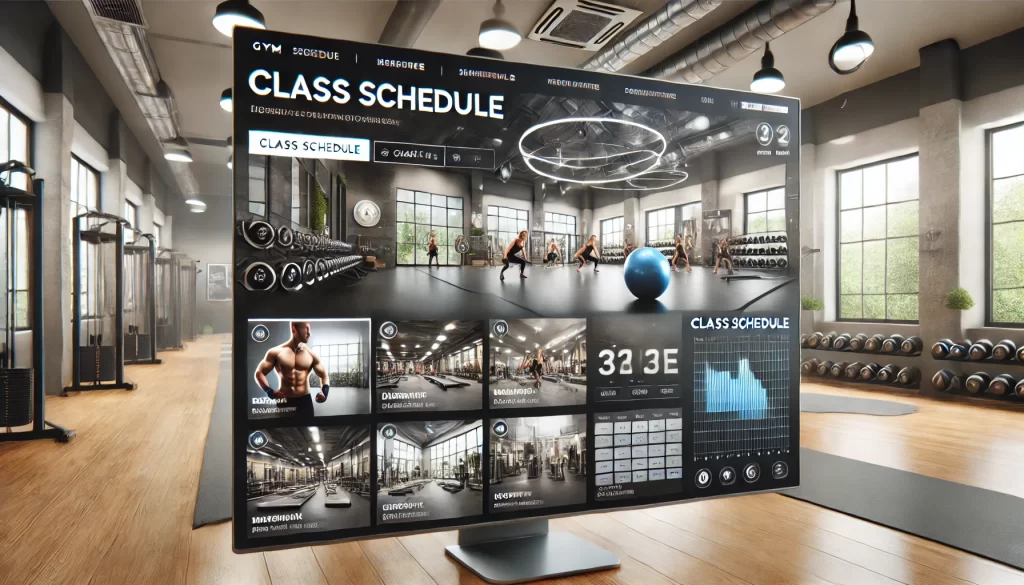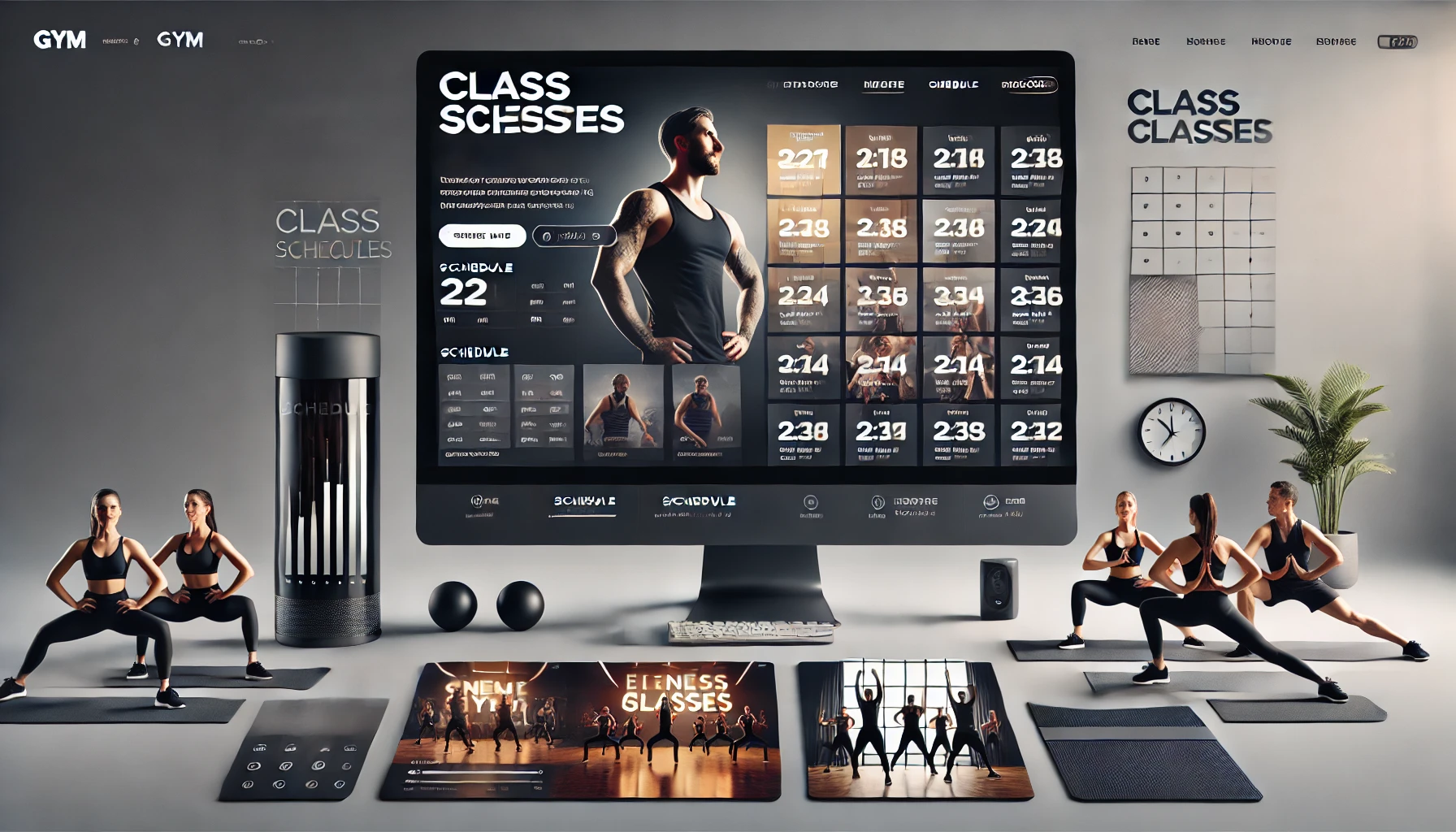Introduction
A gym’s website is often the first interaction a potential client has with the business. Whether they’re looking to sign up for a membership, book a class, or simply learn more about the gym’s services, the website serves as a crucial touchpoint. But what makes a gym website truly effective? It’s not just about putting up information online; it’s about creating a seamless, engaging, and functional experience that converts visitors into loyal members.
The importance of specialized website design for gyms cannot be overstated. In a crowded market where people have high expectations for user experience, a well-designed website can make the difference between a new member signing up and clicking away to a competitor. This blog will delve into the core elements of gym website design, the benefits of custom-built websites versus templates, and how to choose the right designer for your gym.

Why Specialized Website Design for Gyms Is Essential
Gym websites are unique in that they must serve a variety of functions more than just providing basic information about the gym, a well-crafted website can boost memberships, enhance the user experience, and streamline internal operations. But what makes designing a gym website different from a regular business site?
Unlike traditional businesses, gyms must incorporate features like class schedules, booking systems, member portals, and integrations with fitness software. Additionally, the design must reflect the energetic and welcoming atmosphere of the gym itself, creating a visual experience that mirrors the physical environment. Customized website design tailored to a gym’s needs allows for the creation of a site that is fully aligned with your brand and goals. Whether your gym focuses on high-intensity training, yoga, or wellness, the right website design ensures that visitors can easily navigate the site, access services, and book memberships or classes without any hassle.
Related Posts
Benefits of a Custom-Designed Website vs. Generic Templates
While many gym owners may consider using a generic template for cost-effectiveness, custom-designed websites provide significant advantages, particularly in terms of branding, functionality, and long-term results.
Tailored Design to Your Brand and Audience
Custom website design allows for a fully personalized look and feel, that aligns with your gym’s identity. From the logo and color scheme to the type of images and content, a custom website ensures that every element reflects your gym’s unique offerings. Templates, on the other hand, can make your website look similar to many others, limiting your ability to stand out.
Enhanced Functionality and Integration
Gym websites require specialized features like class schedules, booking systems, and member portals. Custom websites can integrate these features in a seamless and user-friendly manner, while templates may require you to use third-party plugins or software, which can lead to limitations or compatibility issues.
Better SEO and User Experience
Custom websites are built with your specific SEO goals in mind. Unlike templates, which may not be optimized for speed or SEO, custom designs can be fully optimized to rank higher in search engines and ensure a smooth user experience.
Scalability for Future Growth
AYour gym’swebsite will need to evolve. as it grows Custom-built websites are easier to scale and adapt as your gym adds new services, locations, or features, while templates may not offer the flexibility you need in the long run.

Key Elements of Gym Website Design
A successful gym website needs to integrate both functional elements and aesthetic appeal. Here are some essential features that should be included in any gym website design:
Gym Class Schedules and Booking System
A key feature of any gym website is an easy-to-navigate class schedule. Potential clients should be able to view available classes, instructors, and times at a glance. Furthermore, integrating a booking system directly into the website enables users to reserve their spot in a class quickly, whether from their computer or mobile device.
This convenience improves the user experience and encourages visitors to take immediate action, which can result in increased sign-ups and higher retention rates for members.
Membership Portal and Payment Integration
Integrating a member portal into the website is essential for providing a personalized experience. Members should be able to log in to their accounts to view their membership status, schedule appointments, access training resources, and make payments online. Payment integration allows for seamless transactions for membership renewals, class bookings, or purchasing gym products. By offering these options directly on the website, you can provide convenience and increase conversion rates.
Related Posts
Success Stories, Testimonials, and Social Proof
People trust what others say about a business, and testimonials and success stories help establish credibility. Showcasing client success stories, reviews, and before-and-after photos can inspire trust and influence potential clients to choose your gym over competitors.
Social proof elements, such as the gym’s social media feeds or links to user-generated content, can further establish your gym as a trusted community where real people are achieving their fitness goals.
Image Galleries Showcasing Gym Facilities and Classes
Images are a powerful tool for creating a connection with visitors. A gallery showcasing your gym’s facilities, classes, and members can give potential clients a glimpse into the gym’s atmosphere. High-quality images can convey the energy and vibe of the space, making it easier for visitors to visualize themselves working out there. A well-curated image gallery that showcases a variety of fitness activities and happy members can also help create an emotional connection, enticing visitors to join and participate.
How to Choose a Website Designer for Your Gym
When it comes to creating a gym website, selecting the right designer is critical. Here are some factors to consider when choosing a web designer for your gym:
Experience in Designing Fitness-Related Websites
A designer with experience in building websites for gyms or fitness-related businesses will be familiar with the specific needs and features that are necessary for your site. They’ll understand the importance of visual appeal, functionality, and mobile optimization for your target audience.
Portfolio and Client Reviews
Before hiring a designer, review their portfolio to see if their previous work aligns with your vision. Look for websites that cater to the fitness industry and assess the design, user experience, and functionality. Additionally, client reviews and testimonials can provide insights into the designer’s work ethic and the quality of their designs.
Technical Support and Post-Launch Assistance
The design process doesn’t end when the website goes live. Ongoing technical support is crucial for ensuring the website remains up-to-date, secure, and free from technical issues. Make sure the designer offers post-launch support and is available for troubleshooting or future updates.
Cost Considerations
When planning your gym website design, it’s important to consider both the initial costs and ongoing expenses.
Budget Ranges for Gym Website Design
The cost of designing a gym website can vary depending on the complexity of the project, the features required, and the designer’s rates. For a custom-built gym website, you can expect to pay anywhere from $2,500 to $10,000 or more. Template-based websites are generally more affordable, with costs ranging from $500 to $2,500.
Ongoing Costs – Maintenance, Updates, Hosting, and Marketing
Once your website is live, there are ongoing costs to consider, including hosting fees, domain registration, content updates, and marketing efforts like SEO or paid ads. It’s essential to budget for these long-term costs to ensure your gym’s website remains functional and visible.
Key Takeaways
Creating a standout gym website requires thoughtful design and functionality to attract and retain members. From booking systems to social proof, every element plays a role in ensuring the success of your gym’s online presence. By investing in the right designer and focusing on essential features, you can create a website that serves as a powerful tool for growing your business.
- A custom-designed gym website offers better branding, functionality, and SEO benefits.
- Essential features include booking systems, membership portals, and image galleries.
- Choose a designer with experience in the fitness industry for optimal results.
Investing in a high-quality website design for your gym is essential for attracting and retaining members. A well-designed website offers a seamless user experience, integrates important functionalities like booking systems and payment gateways, and showcases your gym’s unique brand identity. Whether you choose a custom-built website or a template-based design, the key is to ensure that the website meets your gym’s specific needs and enhances the overall user experience. As you embark on the journey to design or redesign your gym website, make sure to choose a designer with experience in the fitness industry, and consider the long-term benefits of investing in a professional, custom-built website.
FAQs
What makes a gym website different from other business websites?
Gym websites must incorporate features like class schedules, member portals, booking systems, and payment integrations to enhance the user experience.
How do I choose between a custom website and a template for my gym?
Custom websites offer better branding, functionality, and SEO optimization, while templates are more affordable and quicker to set up but may lack flexibility.
What should I look for in a gym website designer?
Choose a designer with experience in the fitness industry, a solid portfolio, and the ability to provide post-launch support.
What are the typical costs associated with gym website design?
Custom-designed gym websites can cost between $2,500 and $10,000, while template-based sites are typically more affordable, ranging from $500 to $2,500.
How long does it take to design a gym website?
Custom-built websites usually take several weeks to a few months to design, while template-based websites can be launched more quickly.
